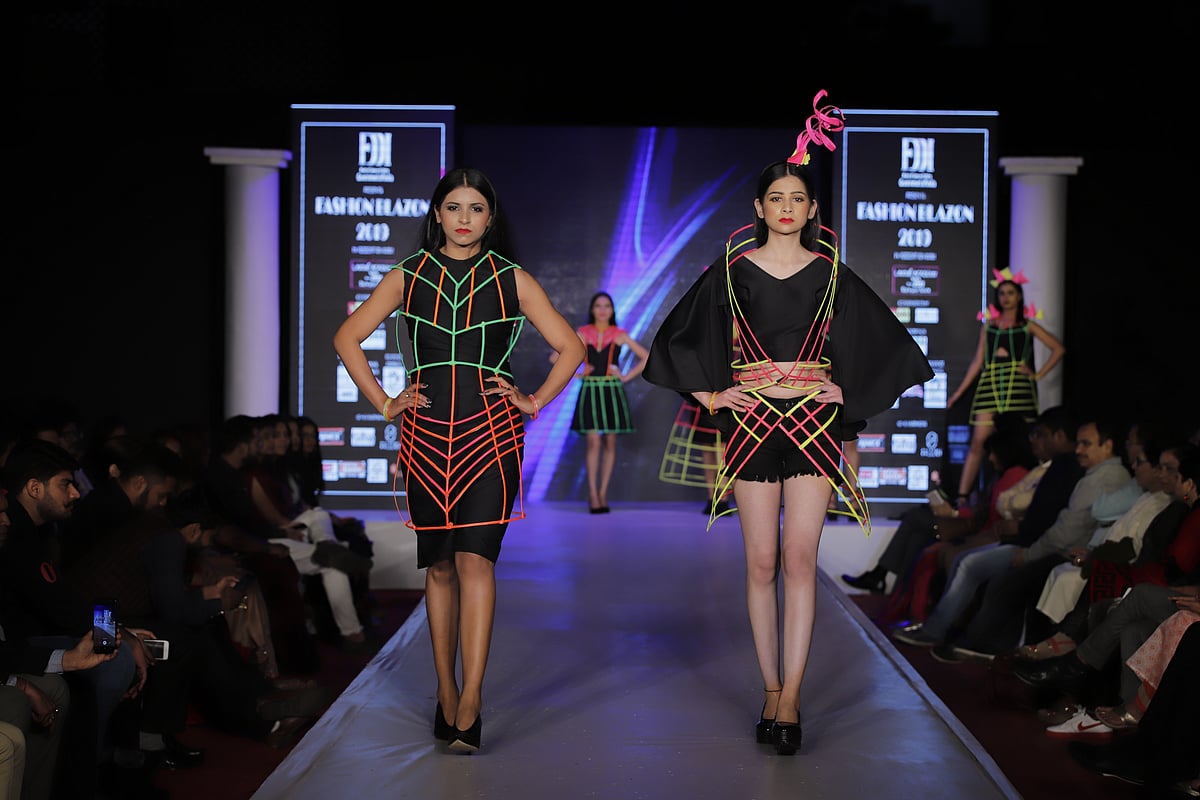Every season brings in its unique fashion trend. And while it keeps changing in the blink, technology has become the new orange in the fashion industry. Customisation is THE thing, apart from AR, Mapping, VR and more. It is fast changing the very business of the industry.
The viewpoint
Globally, fashion brands are using technology to make shopping more personal. Anshuman Singh, Creative Founder, Paul Adams, calls it a massive upgrade. “Metaverse being the driving force, AR and VR will complement the driver to gain momentum. Fashion shopping will experience immersive digital transformation in shopping by watching photographs and a 3D view of oneself with the fashion item you have worn.”
The shopping experience will change with physical stores and visual merchandise getting an increased digital presence. H&M has already stepped into this zone by bringing in the first Metaverse store. The development has been unfolding in the last two to three years. Chahat Pahuja and Sanskar Mishra the Co-founders & Creative Directors of Farda, a new-age brand representing Indian streetwear worldwide, have seen new technologies create a vast opportunity to cater to the virtual world. “This has led to high post-purchase satisfaction and in turn increased brand loyalty,” they say.
Brands that have an open mind to technology are gaining ground. The thing with digital fashion is its nature of being collaborative and creative. Users can choose sampling, try-outs and digital showcase. Digital samples with reduced manufacturing costs remove carbon footprints.
For Bibhuti Dash, Founder & CEO, Louoj, technology has solved the complexity in the bespoke clothing buying process. “Traditional fashion brands used to be hesitant in implementing new technologies. The pandemic has proved that there are plenty of business cases and are attracting new audiences from the digital clothing,” Dash shares.

India connect
Dr Sunil Changdev Talekar, Chief Faculty, Department of Fashion Design, FDDI Noida, has seen AR clothing technology emerge in India via international brands like Levis, etc. “Manish Malhotra just opened his very first virtual store in India, and customers can now enjoy the beautifully layered 3D techniques,” he says.
Indian shoppers have indeed taken to technology, like fish to water. “Gone are the days of ‘Touch & Feel’. The purchase decisions are now made by the ‘Look & Feel’ of the products which are fulfilled through the augmented reality, virtual trial rooms, etc,” Sakshi Chhapolia, CEO & Co-Founder, AAIENA reveals.
The changing consumer demands and the global fashion industry are also driving the Indian market with AI-based and 4.0 technologies. Indians can use visual AI, NLP and search engines to upload the picture of the item. They get the closest matching product from the website of the brands. Technology like AI and data analytics provide demand & trends prediction. Brands can thus plan launches and more just with the data at their perusal.
Singh also considers the Indian fashion industry at par with the international market. “The current trend in digital gaming (which is the first step in Metaverse) is catching up fast. Brands are now creating in-game accessories which can be bought by players. Indians are always fascinated by these games; the biggest example was PubG (before it was banned),” Singh explains. This means Indian brands are closing in on the factor to bring out bespoke options.
Dash predicts the potential of sustainable fashion start-ups. “Brands now can recreate fabrics and model into true replicas of 3D garments. They can alter digital garments with reduced material and resources waste and try clothes on digitally to find the right match. They can offer design variations created on-demand digitally.”

EMIEE SHARMA
Deal breaker
Digital collaboration and customisation will play a huge role. A unique concept of Phygital has also cropped up in which the purchasing experience is a combined and complimentary version of ‘physical and digital encounters’. The digital aspect adds to the physical channel and makes it personal. “The main goal is to tell a story and convey the brand’s message. In the case of fashion and technology, the idea is that the story conveyed emphasis not just the brand’s ideals, but also the product's goal,” suggests Chhapolia.
“To create better engagement, the tale must convey emotions and should have an emotionally sound conclusion. Not only is written language employed in storytelling; aural, visual, olfactory, and even graphic language impacts the story by leaps and bounds,” Chhapolia adds.
With the pandemic altering the scenario, brands are now reinventing themselves, with offers of pluralism and variety. Every product will have its unique strategy and attitude. “This vital difference and mismatch between the consumers and fashion brands are being solved by various fashion-tech start-ups around the globe. The bigger aim is to increase fashion brands' reach across different digital platforms to the buyer's liking. This developing ecosystem will also include influencers, fashion brands and small players in these diverse digital platforms. This disruption and digitisation along with reshaping the existing business model could be the ultimate solution to meet the needs of fashion brands and consumers alike,” Dash explains.
The engagement creation will go through the roof. There is no stopping it. “The more time spent in this virtual world, the more realistic it will become. Shopping in this virtual world for your virtual avatar is just a start,” predicts Singh.

The real world
The technological upgrade has altered the way physical stores and spaces work. “There are technological advancements in facial recognition, autonomous delivery robots and store assistants, cashier-less stores, augmented reality, etc. AR/VR has been a front-running technology in creating a physical-cum-digital future. It seems like consumers are excited about it. The lockdown and the need for a safe alternative have played a major role in increasing the demand for AR systems. They are allowing customers to adopt a “try-before-you-buy” approach through digital platforms, thus helping replicate and even build on the in-store experience online,” Chhapolia says.
A brand like Nike has used AR & VR in its physical stores. All the customer has to do is scan the items for information. They can also use the VR experience to feel the steps of Nike’s supply chain. Timberland has displays installed that help customers view a mirror-like view of self. All they have to do is try different clothes. In Malad, Mumbai, the Shoppers Stop has put in a Magic Mirror. Here, the AR technology uncomplicates the try-out and sampling process. Then, there's ‘Intensity to Purchase’. A customer has an app of a brand. If they pass the said brand's store, they get a notification of an item available there. Increasing usage of smartphones and better internet connectivity is aiding in the use of AR to their overall benefits.
Future talks
To go by Singh’s vision of the future of fashion in India with regards incorporation of technology, it lies in the Tier II and III places. “These people are young and hungry to catch these trends. The sales of VR headsets are showing drastic upside in India. This will take this young population to a fantasy new digital world which will give brands leverage to allure these new digital consumers,” Singh avers.
The ever-evolving world of fashion and technology also means newer challenges in front of retailers to deal with any digital or online shopping challenges. As mentioned earlier, AR & VR have revolutionised the online and in-store fashion experience. They are being used increasingly so that both the experience makes things easy for the customers. Custom-made clothing will be on the agenda of trends and consumers.









